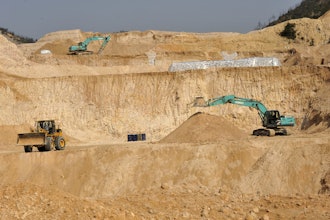
The Energy Information Administration recently unveiled its Short-Term Energy Outlook containing the following data:
- U.S. crude oil production averaged 9.4 million barrels per day (b/d) in 2015, and it is forecast to average 8.8 million b/d in 2016 and 8.7 million b/d in 2017.
- Forecast production in 2017 is more than 0.1 million b/d higher than in last month.
- Brent crude oil prices will average close to $48/barrel (b) in the fourth quarter of 2016 and in the first quarter of 2017.
- Forecast Brent prices will average $43/b in 2016 and $51/b in 2017.
- West Texas Intermediate (WTI) crude oil prices are forecast to average about $1/b less than Brent prices in 2017.
- Higher crude oil prices contributed to U.S. average retail regular gas prices in October increasing by 3 cents/gallon (gal) from September to an average of $2.25/gal.
- With the switch to less-expensive winter gasoline blends and the typical seasonal decline in gasoline consumption, EIA expects gasoline prices to fall to an average of $1.97/gal in January. Retail gasoline prices are forecast to average $2.13/gal in 2016 and $2.27/gal in 2017.
- Natural gas marketed production is forecast to average 77.3 billion cubic feet per day (Bcf/d) in 2016, a 1.4 Bcf/d decline from the 2015 level, which would be the first annual decline since 2005.
- EIA expects production to start rising in November as a result of increases in drilling activity and infrastructure build-out that connects natural gas production to demand centers.
- Growing domestic natural gas consumption, along with higher pipeline exports to Mexico and liquefied natural gas exports, contribute to the Henry Hub natural gas spot price rising from an average of $2.50/million British thermal units (MMBtu) in 2016 to $3.12/MMBtu in 2017.
- EIA forecasts total U.S. generation of electricity from utility-scale plants will be 11.2 terawatthours in 2016, up 0.2 percent from 2015.
- Total utility-scale generation grows by 0.5 percent in 2017.
- EIA expects the share of U.S. total utility-scale electricity generation from natural gas will average 34 percent this year, and the share from coal will average 30 percent. Last year, both fuels supplied about 33 percent of total U.S. electricity generation.
- In 2017, natural gas and coal are forecast to generate about 33 percent and 31 percent of electricity, respectively, as natural gas prices are forecast to increase.
- Electric power sector coal stockpiles decreased five percent in August from the previous month. Although coal stocks are at their lowest levels of the year because of the typical seasonal decline that occurs each summer, they are still four percent above the August 2015 level.
- After declining by 2.7 percent in 2015, energy-related carbon dioxide (CO2) emissions in the first six months of 2016 were the lowest for that period since 1991. For all of 2016, emissions are projected to decline by 1.5 percent, and then increase by 0.7 percent in 2017. Energy-related CO2 emissions are sensitive to changes in weather, economic growth and energy prices.
For a complete look at the report, go to https://www.eia.gov/outlooks/steo/






















